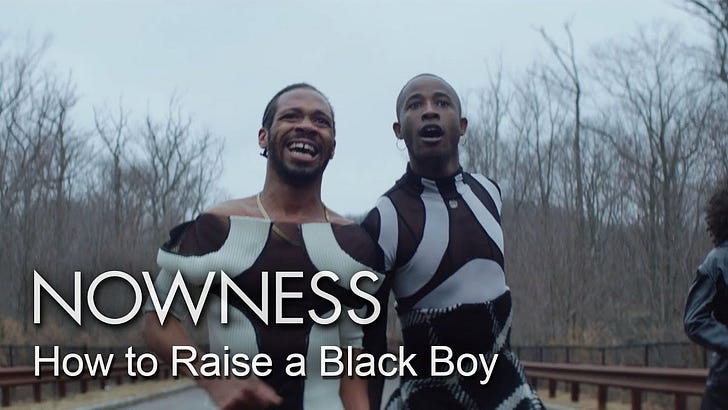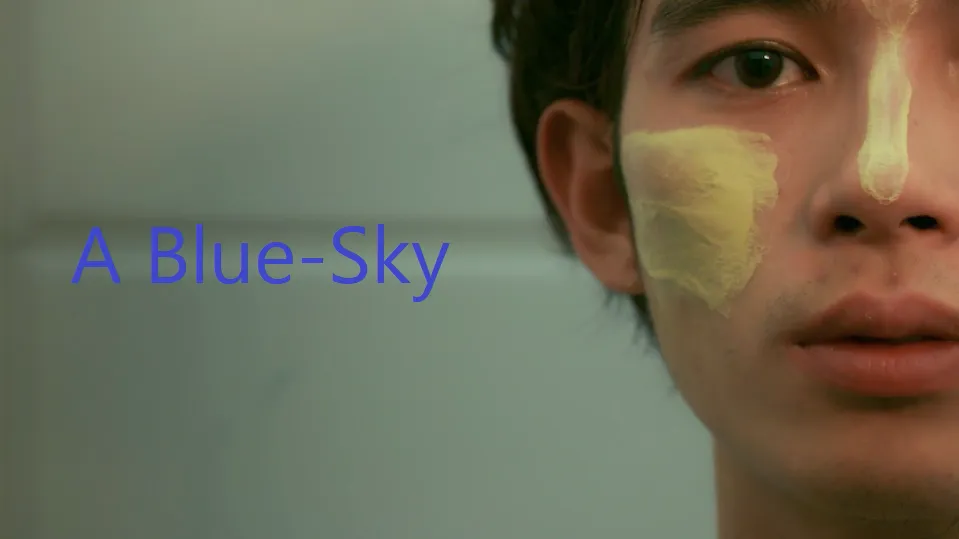Four queer and trans short films imagine a future without oppression
Incarceration around the world, throughout history and in all its forms, has always been a tool to enslave, kill, and exert power over the people that are seen as Other – Black and Indigenous folks, queer and trans people, caste-oppressed folks, poor folks, disabled folks, immigrants and more. Seeking justice and freedom requires abolishing the institutions that imprison us, but also, simultaneously, fighting to build new approaches and ways of being together that center care and collaboration. And all of this begins with queer dreaming to imagine the utopias we wish to live in.
Only one of this week’s four films is explicitly about prison incarceration, and I don’t want to go too far in making analogies to imprisonment that in any way downplay the specific and real harms of prison systems. But all of our freedoms are connected, and highlighting the ways in which we are oppressed by institutions broadly feels important to me, especially when we’re also dreaming of the same kinds of liberation.
Abolition of prisons, detention centers, and psychiatric institutions are all very close to my heart. If you are in the U.S. and would like to get involved in LGBTQIA2S+ prison abolition efforts – whether through becoming a pen-pal to an incarcerated individual, or advocating for change politically – I would encourage you to find and support your closest Black & Pink chapter. I’m also happy to help anyone figure out whether there are other abolition organizations they can join if you are not in the U.S. or not close to a Black & Pink chapter – my email is linked in my footer below.
Let me start by telling you my impressions of Un chant d’amour | A Song of Love, written and directed by Jean Genet, before I knew more about the context in which it was created. This captivating short film is black-and-white, with no dialogue and a haunting score, set in a French prison where two incarcerated men have fallen in love despite being locked in adjoining cells where they cannot see or touch each other. They find ways to express their love and desire from sharing what they can (blowing smoke through a hole in the wall, trying to pass a bouquet of flowers between their barred windows) and imagining the rest through phantom touch and vivid fantasies. The inhumanity of incarceration is depicted not only by their separation, but by a prison guard who acts as voyeur, enslaver, and rapist all in one, his eyes dually a tool of surveillance and objectification, his gun and his penis almost one and the same as he enacts violence on the prisoners. Still, the two incarcerated men’s dreams of freedom persist, in part because they are dreaming together.
Un chant d’amour | A Song of Love, an amazing film at face value, is made even more stunning when you learn that it was made in 1950, and that it was the only film ever made by Jean Genet, a French writer, playwright, poet, and political activist. Genet’s life is a fascinating story on its own – he grew up in poverty and was himself incarcerated for years, almost receiving a life sentence before prominent figures like Jean Cocteau, Jean-Paul Sartre, and Pablo Picasso petitioned the French president to pardon him. Genet’s writing centered homosexuality and criminality through novels, plays, essays, and poetry. He became more explicitly politically active in the 1960s, fighting the police brutality experienced by Algerians in France, working with the Black Panthers in the United States, visiting Palestinian refugee camps in Beirut and Jordan, and supporting the work of leaders like Huey Newton, Angela Davis, George Jackson, and Michel Foucault.
Un chant d’amour | A Song of Love is no less remarkable than any other facet of Genet’s life – put in context, the connections between incarceration, colonialism (one of the main characters is Algerian), and systemic racism (another incarcerated character is Black) in the film become even clearer. All cast and crew members apart from Genet were uncredited to protect their privacy, a measure that was became all too necessary when the short film was banned in France due to its sexually explicit portrayal of homosexuality. Despite being considered a classic of queer film, Un chant d’amour | A Song of Love appears to be broadly unknown, in large part because only one copy of the film remained for years. Digitizing the film has made it accessible for a new generation of audiences, and – sadly – its messages about oppression and liberation are as relevant today as they were 73 years ago.
Un chant d’amour | A Song of Love
“Come out quickly, out of dark rooms.”
мы станем лучше | We Will Become Better, written by Evgeny Primachenko and Andzej Gavriss, and directed by Gavriss is a music video by Russian indie band Сансара | Sansara that protests the 2020 amendment to the Russian constitution, proposed by Vladimir Putin, that defined marriage as between a man and a woman. The context is horrific but the film itself is gorgeous, featuring two dancers (Maksim Avdeev and Nikita Orlov) moving in tandem with each other but still completely separated and distant.
I was interested in putting мы станем лучше | We Will Become Better in conversation with the previous film because they share certain themes and conceits: both films are about lovers who cannot touch, separated by injustice, who use music and dance to imagine the intimacy they wish for. мы станем лучше | We Will Become Better is also not subtle about seeing oppression in Russia as a prison, using the symbol of a bird in a cage to depict the ways in which the lovers are trapped by Russia’s laws and systemic homophobia.
“Finding ways to produce [the film] was tricky, nobody was willing to invest in a project like this, risking falling out of favor with the authorities. I tried hard, but it had to lay on the shelf for a while,” said writer Evgeny Primachenko. “A year later, the infamous amendment happened. Together with it, my friends from the Yekaterinburg agency Voskhod were approached by the local LGBTQIA+ Network, asking for help. I shared the script with them and we launched a little crowdfunding campaign to make it happen. Slowly but surely, we found other common thinkers and ended up investing in the project ourselves on top of the crowdfunding campaign. Honestly, we all knew that if we didn’t do it, maybe nobody would.”
мы станем лучше | We Will Become Better

“Fired in the prison of a man’s bones, I become the blazing soul of a woman.”
The Kinnaras of the Dark World is a beautiful visual poem and dance video by trans performer, poet, journalist, radio jockey, and activist Shilok Mukkati. The poem depicts the harm and ostracization Shilok has faced for being transfemine and kinnar, a self-adopted term for third gender folks in certain parts of India; the name kinnara comes from a mythological creature in Hinduism and Buddhism that is strongly associated with music and love. But despite the pain of enduring oppression, being kinnar is also freedom for Shilok, helping her rise and claim her own power.
“[Y]ou don’t know how my body feels, how my mind flows, how I breathe in this patriarchal, stereotypical and conservative social pollution. I don’t even want demand my respect! Because who have given you the bloody power to judge me?” writes Shilok in a powerful essay on her blog. “I have been this way. I being a Shakti the power of compassion and kindness is now becoming Kali the power of time, death and truth. I am a phoenix who has died many times and has been born again. I know the death which you don’t know..! I know the reality which you don’t know..! I have lost my patience and ready for the war which you don’t know… enough of this serenity. I will create my own life, you fool.”
The Kinnaras of the Dark World
“Somehow I drifted off, dreaming dreams of alternate skins and parallel lives.”
Isabel Sandoval’s Shangri-La, written and directed by Isabel Sandoval, depicts the love of the unnamed Filipina-American protagonist (played by Sandoval herself) and her white lover Samuel (Matthew Fifer). Set in the United States during the Great Depression in the 1930s, their relationship is forbidden by anti-miscegenation laws. (The protagonist’s trans identity is only subtly referred to by a scene with dilation that post-operative trans women do, but transness undoubtedly shapes her context as well.) Moving from a church confessional booth to an evocative flashback and again to a vision where the protagonist wakes up as a warrior on a battlefield, the entire film is dreamlike and seductive, showing how the protagonist transcends her current context to imagine other lives.
Sandoval also intended the name of the film to evoke the dreams of a utopia – but also to reclaim a colonial invention. “[Shangri-La is] a fictional place described in the 1933 novel Lost Horizons by the British author James Hilton. He decides that Shangri-La is a mystical, harmonious valley enclosed somewhere in [Tibet], in Asia. I wanted to reclaim that term as an Asian artist, because he’s British and coined it,” said Sandoval in an interview. “That’s why the [full] title for the short is Isabel Sandoval’s Shangri-La, because I’m trying to recolonize the term and have it come from an artist of Asian heritage.”
Isabel Sandoval’s Shangri-La










